
By
James
Updated on
Cooking your food over a fire fed by wood is not a novel thing. Our ancestors did it, and today it’s still an element in most weekend barbecues or outdoor adventures.
Of course, there’s a world of difference in the role that wood plays in cooking today. It’s not merely a fuel-source to get the fire going. Today, it can even change and affect the kind of flavors you get from your food.
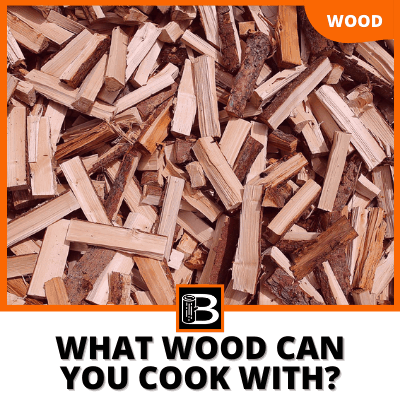
What wood should I use for cooking?
There are over 60,000 types and genus of trees in the world today. While we need not get into the specifics of species, it’s good to know that we generally classify them as hardwood and softwood. Hardwood is the better cooking choice for any cooking work because they generate more heat and don’t burn as quickly as softwood. Softwood, on the other hand, is more useful as lumber and wood products.
Examples of hardwood can include alder, ash, hickory, maple, oak, willow, etc. And softwood comes in trees like fir, redwood, juniper, spruce, pine, etc. Not all hardwoods have the same qualities. But the best woods for smoking or cooking are all hardwoods.
As your cooking and smoking skills advance further, you’ll realize that certain woods go better with specific meats. So, whether you’re smoking lamb, grilling steak, or making your favorite brisket recipe, there are ideal woods for any cooking style.
Best types of wood for cooking/smoking
There is a wide variety of hardwoods that work great for any cooking needs. If you’re a fan of slow-smoking, you’ll know that the wood choice also matters a lot in the final taste. The specific type of wood you use can depend on the meat, smoker, preference, and the general situation.
There is no need to go into overly detailed discussion of each type of hardwood here, as that is both impractical and unnecessary. But you should have an understanding of what each type of wood offers and how it affects your food.
Here are some common types of wood that add value to any cooking style:
1. Apple
Applewood provides a sweeter taste to the whole mixture. It can also have an ashy-smoky flavor that is crucial for those grills and barbeques. Some users also feel that they add that rich brown or yellow coloring effect.

2. Alder
Alder wood is on the lighter side of the flavor spectrum. So, try and use it when you don’t have the taste to be overpowering. Personally, I feel like it goes great with veggies or seafood.

3. Cherry
Unlike Alder, Cherry wood will give a more robust and bolder aroma to the food. It’s better to use it in combination with other milder woods to dominate the aroma.
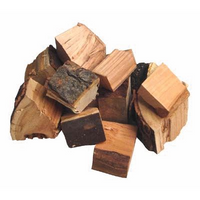
4. Camphor Laurel
Camphor Laurel gives an aroma that’s as exotic as the name suggests. It can also have a pungent smell that goes well with specific dishes.
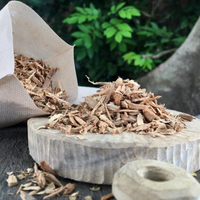
5. Heather
Heather wood can give off paler, yellowish hues as it burns. It’s another great companion to seafood, but you have to use it in moderation.
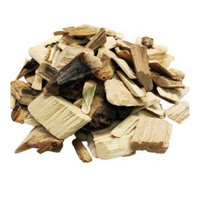
6. Hickory
Hickory is an all-time favorite for a lot of chefs and amateur cooks. The taste is distinct, and the flavor is a robust tone. Barbeque purists will insist that this one’s a must if you’re going for the real deal.
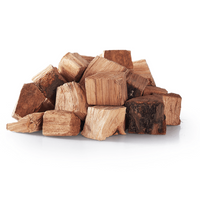
7. Maple
Maple wood is an excellent addition to any smoking session. It works great with other hardwoods as well as alone. It does have a resinous and bold flavor that not all people enjoy.
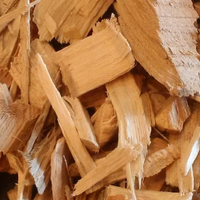
8. Oak
The golden-brown hue of Oakwood is a classic in any smoking and grilling session. It gives that classic flavor of smokiness and aroma to any meat of your choice.
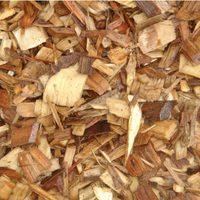
9. Walnut
I have found that walnut wood is one of the best for blending with other wood types. It has a rich smoky flavor and a solemn, intense tone. However, it can also overpower if not used carefully.
There is no doubt in my mind that this list is not exhaustive or a rigid rule to follow. And remember that wood choice is important, but one should not get lost in the details.
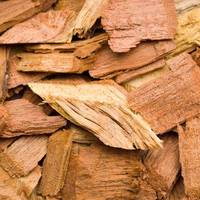
Difficulties in choosing the right wood
The variety and types of woods can go off the charts if you try to put them down on paper or on text. If you’re overwhelmed by the flavor, aroma, and taste of each wood type, you’re not alone. My recommendation to you is: Don’t sweat it!
You don’t even have to worry much if you are a beginner because it takes a lot of experience to figure out what woods go with what. Get started by choosing a reliable hardwood and sticking to it and you will begin to see the variations.
There is a whole range of other factors that affect the final taste and quality of the meat. And all of these factors probably matter more before you get into the specific type of wood. You can first focus on the best smoker that will suit your situation.
If you are an experienced pitmaster, you already know that wood choice is not as straightforward as it appears. Some differences can be hard to detect sometimes. And, ultimately, there are other tastes and aromas to take into account. Cooking temperature, rubs, spices, sauce, recipe, etc. All play a role. Wood comes into play only after you find the right balance of these elements.
Final Note
You don’t need to get your wood preference perfect right away since the quality of meat, temperature and cooking time matter more than the specific wood you are using. Once you have that down, your wood preference can depend on what kind of technique and style you prefer. Later on, you can even focus on preparing the wood the right way before smoking.
Cooking wood is essential but not limited to universal rules. The best way to go about it is to let your cooking style and choice of timber organically evolve as you learn more about it.
About The Author

Reviewed by
James
James is a writer who is a self-confessed kitchenware and coffee nerd and a strong advocate of Sundays, good butter, and warm sourdough.
Related Posts
[wp post shortcode here]
